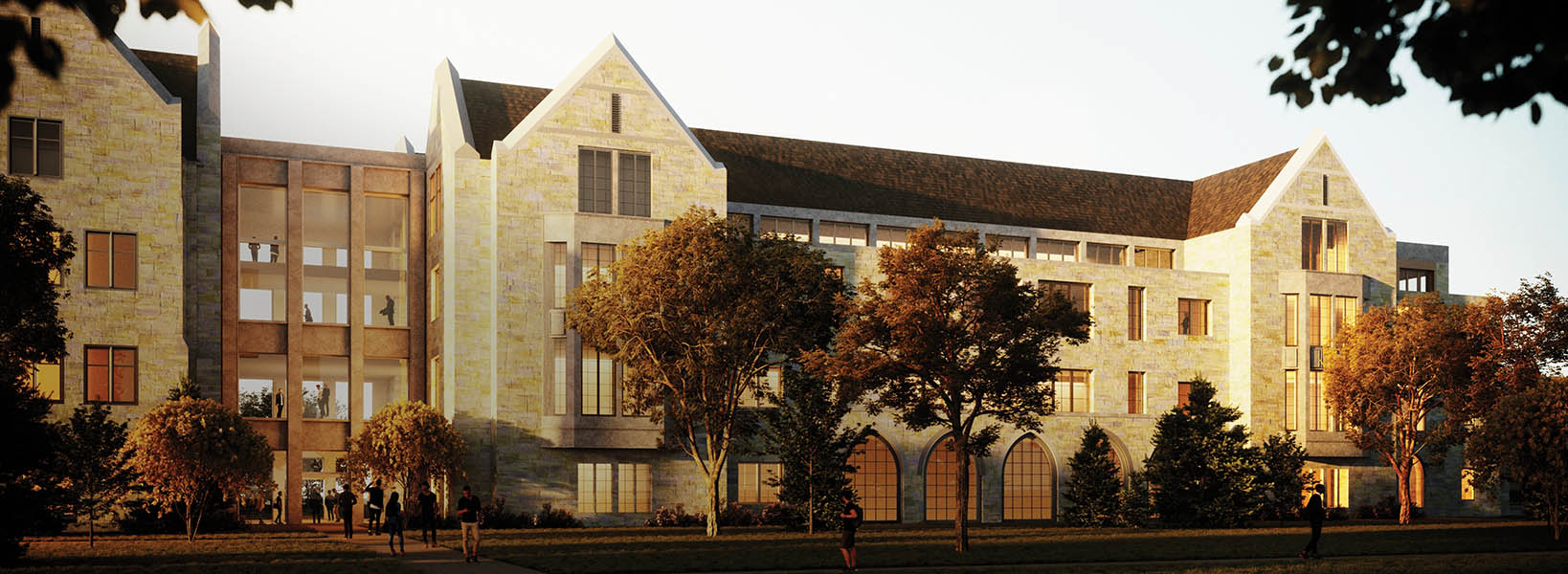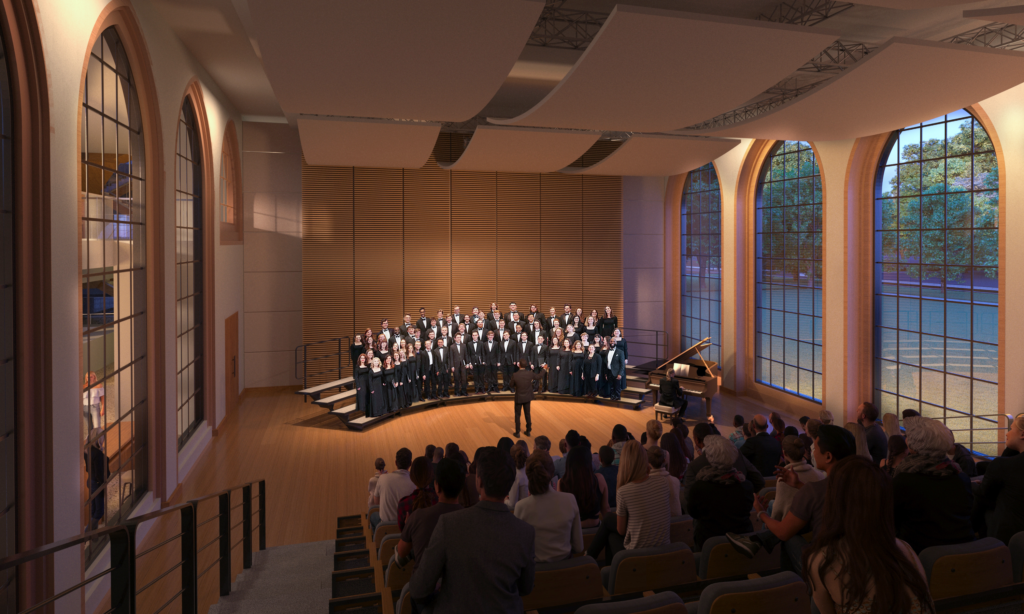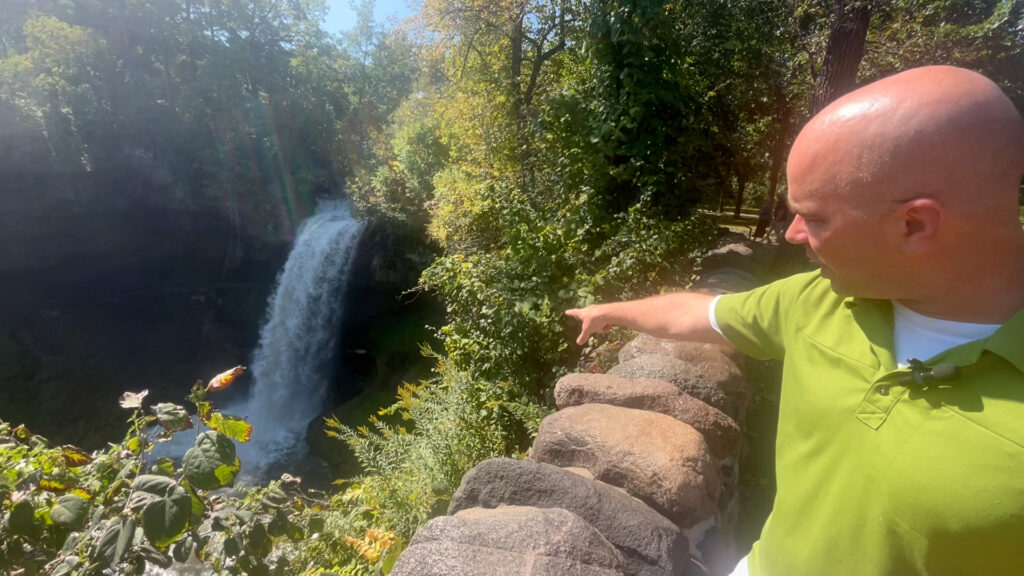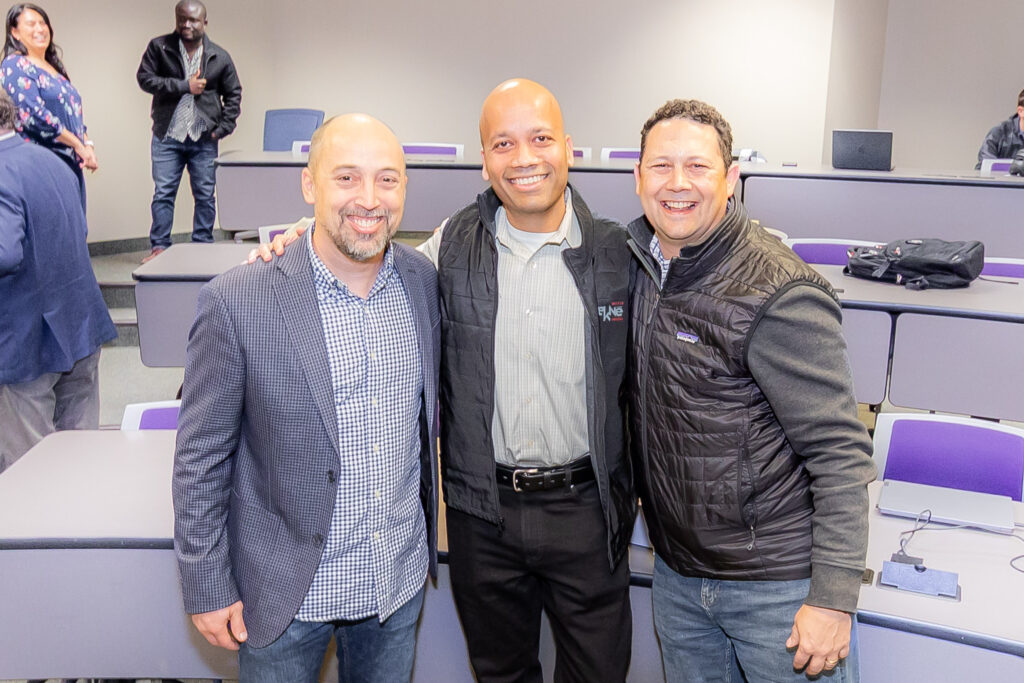An integrated facility will showcase science, technology, engineering, arts and math.
While campus has continued to grow and add facilities in recent years, the last time a new academic building was added to the mix was in 2006 with the completion of McNeely Hall.
That’s all about to change – big time.
Fundraising is now underway for the $100 million state-of-the-art complex that aims to transform south campus by adding a world-class STEAM (science, technology, engineering, arts and math) complex targeted to open in 2024. The planned addition will bring together multiple disciplines into one integrated facility to encourage collaboration of diverse voices while preparing St. Thomas students for the evolving needs of employers.
“This is going to break the mold,” Mark Stansbury-O’Donnell, interim dean of the College of Arts and Sciences, said. “STEAM is the liberal arts in action.” When visitors to the STEAM complex enter its multipurpose atrium, they will see emerging journalists working in a cutting-edge newsroom above and civil engineers operating in the high bay to the left. They will enjoy musicians practicing to their right or observe the conversations taking place in the balconies all around them. In essence, they will experience a living expression of St. Thomas’ ongoing priorities to promote academic excellence and to intentionally set students on a path toward their career start and journey for personal growth.
“Our goal for this complex is to prepare our students for the jobs of today – and tomorrow – by providing experiences that employers value,” President Julie Sullivan said. “The best way to do that is by breaking down silos, focusing on collaborative, interdisciplinary education and incorporating diverse viewpoints. In doing this, we’re aiming to attract top-talent students and faculty with a state-of-the-art learning facility and engaging in improving diversity by supporting women and people of color in STEAM fields.”
Building up STEAM
The creation of the STEAM complex is meant to further position St. Thomas to attract a wider community of students, faculty and staff, while also enabling the university to broaden its partnerships with local, regional and national businesses.
But there’s still more fundraising to be done in order to make the STEAM complex a reality.
“It’s compelling to donors when they learn the university undertook a unique inclusive design process by including the voices of industry, employers and the community to create a reciprocal asset,” Vice President for University Advancement Erik Thurman said. “We believe this will be the first building of its kind in the Twin Cities that will be welcoming to all in serving both our students and the community in STEM and arts education, ultimately inspiring and educating a diversity of ‘principled, creative problem-solving leaders’ who will fuel the talent pipeline for Minnesota and beyond.”
To ensure it would achieve this intended impact, St. Thomas gathered feedback from internal and external groups, including students, alumni and 17 different industry partners.
“Spontaneous interaction and collaboration between people are critical to the emergence of creative, practical ideas that work in the real world,” said Ashish Khandpur, executive vice president of the Transportation and Electronics Group at 3M and a member of the St. Thomas Board of Trustees. “We’ve found that for people to work differently, they need a different environment ... one that inspires creativity, collaboration and experimentation.”
Designed for collaboration
The STEAM complex’s open floor design will put learning on display, which, in addition to the complex’s flexible collaboration spaces, will help students to grow their appreciation of other disciplines.
Expected to add more than 130,000 square feet of facilities to the university, the building will feature five levels of modular, multipurpose spaces and wide corridors. It will include an emerging media newsroom, studios and classrooms, science and engineering labs and offices; an art gallery; a 250-seat choral rehearsal and performance space; an instrumental rehearsal space and storage; visitor lobbies, café and community spaces.
The community space may host local K-12 schools, community gatherings and STEM and music partnerships.
This hub of hands-on innovation will connect to O’Shaughnessy Science Hall, which in turn is linked to Owens Science Hall. The numerous labs and studios in the complex will provide ample opportunities for hands-on learning and collaboration.
It will host an array of academic disciplines from the College of Arts and Sciences and the School of Engineering, the largest private engineering school in Minnesota. Don Weinkauf, dean of the School of Engineering, said that students in the school benefit by tapping into what they have learned from their nonengineering courses as part of their St. Thomas liberal arts education.
“Engineering is about people. It’s about listening to people, moving people toward common goals, and delivering products and services for people,” Weinkauf said. “The need for a liberal arts education is the need to understand humanity, which engineers ultimately will serve. Listening, empathic design and understanding the voice of customers and the needs of society manifest in a liberal arts education.”
STEAM COMPLEX
Home to three academic areas:
• Arts (art history, emerging
media, music)
• Engineering (computer, civil,
electrical and mechanical)
• Sciences (biology, chemistry,
physics and earth, environment
and society)
Provides infrastructure for a new central
utility plant
Building size 130,000 square feet
Designed to achieve LEED Gold
Total project cost – $100 million
As part of emphasizing the intersectionality of communication and technology, the College of Arts and Sciences’ Department of Emerging Media (journalism, digital media arts, and strategic communication majors) will be housed in the STEAM complex.
“We need to make storytellers out of every one of us,” said Weinkauf, who noted that the School of Engineering also offers a course of study in communications through its data visualization offerings.
Bringing several disciplines together under one roof is one way that St. Thomas will innovate, grow and excel in ways that align with its educational mission and vision to provide relevant and continuous learning and strategic connections for Tommie leaders of today and tomorrow.









